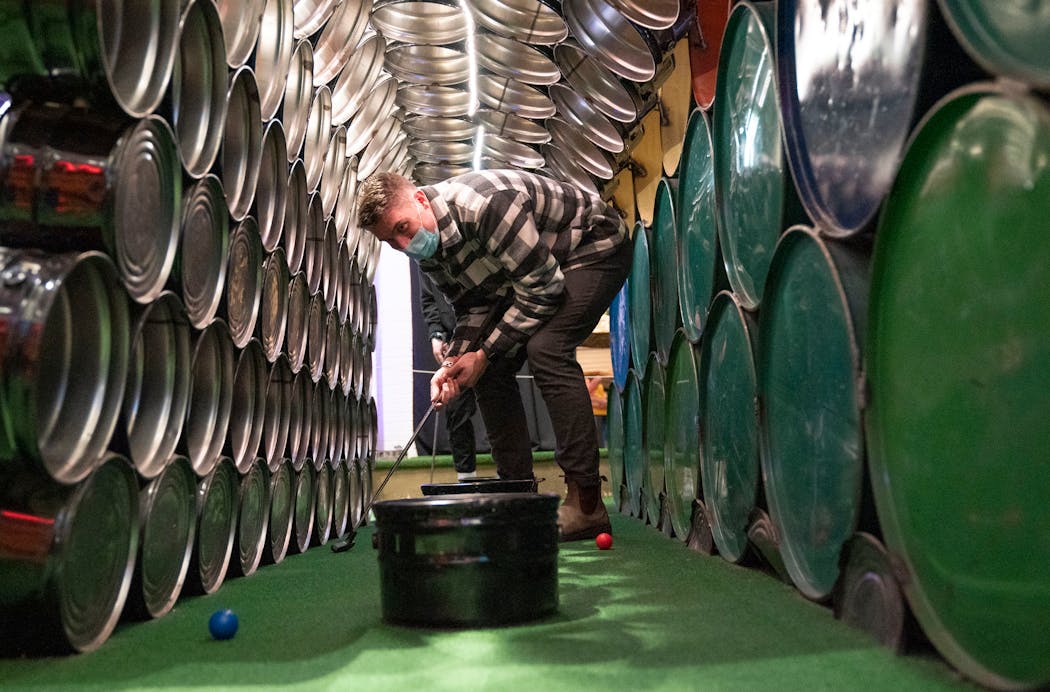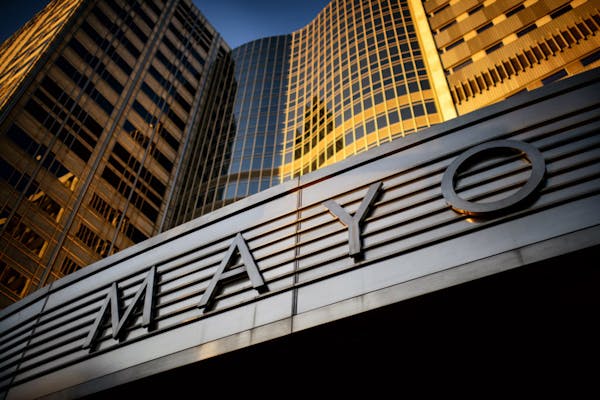Don and Betty Cooke of Minnetonka emerged from the sheltered life of pandemic precautions slowly — returning to restaurants last September and a concert at Orchestra Hall in December.
Last weekend, the couple, both 76, joined a huge crowd — nearly all wearing masks — as the University of Minnesota men's basketball team beat Rutgers at the Barn.
"We're doing a lot of things now. But we're careful and we follow the rules," Don Cooke said.
As the omicron variant of COVID-19 spread quickly, it sharply boosted cases and hospitalizations. But it has proven far less deadly, especially to people who've received vaccines.
As a result, the return to a pre-pandemic way of life — while it still has some distance to go — wasn't set back as much as in previous waves of coronavirus, including the delta variant last summer.
Some Minnesota officials renewed mask mandates and other safety measures in recent weeks, but businesses avoided huge declines. Across the Twin Cities, many people still did the things they wanted — attending sports events, visiting museums, shopping or even dancing in a nightclub.
CB Sherlock still won't eat in a restaurant or attend live theater, but she ventured out to the Minneapolis Institute of Art last week when COVID-19 cases set a daily record in Minnesota.
"I don't feel as frightened, but I'm still cautious," said Sherlock, 65, a Minneapolis resident who is fully vaccinated and has managed to avoid the virus so far. "I wouldn't come on a weekend."
MIA attracted more than 12,000 visitors through the first half of January and is on track to see monthly attendance top 20,000 for the third month in a row. By contrast, fewer than 1,500 people came last January.
"Our trajectory is really good," said Kristin Prestegaard, MIA's chief audience officer. "We just did our forecasting for the next fiscal year [which starts in July] and we feel really confident that we will be at 75 to 100% of pre-pandemic attendance because of the really strong numbers we are seeing and the strong programming we have prepared."
At the Minnesota History Center and the Mill City Museum, attendance dropped about 20% from projected levels this month, versus declines of 50% during previous outbreaks, said Kevin Maijala, who oversees both facilities at the Minnesota Historical Society.
"People are adjusting — that's the reality," Maijala said. "There is definitely a segment of our audience that is weathering things differently."
At the Mall of America, traffic in mid-January was down just 3% from the same time in 2020, according to traffic analytics firm Placer.ai.
"I think we've adapted," said Kristin Thielking, 52, whose family made a weekend trip to the Twin Cities from rural Wisconsin to visit an art exhibit and the indoor miniature golf center at Can Can Wonderland in St. Paul.
At Bunker's, a popular live music club in Minneapolis' North Loop, the dance floor was crowded with unmasked patrons during two recent visits. Joanne Kinney, who has worked as a nurse for 15 years, said she appreciated the club's relaxed attitude since she has to wear a mask all day at work.
"I'm not worried," said Kinney, who is fully vaccinated and has survived two bouts with the virus. "If it's my time, it's my time. But I don't think I'll get it again. Things are getting better."
A manager at Bunker's who asked not to be named said overall business remains down about 25%. He said he doesn't have enough staff to enforce the city's mask mandate.
Some of the biggest crowds have been showing up at sporting events. At Minneapolis North High School, fans packed the gym at several recent basketball games. Athletic Director Kale Severson said the boy's varsity team is now drawing as many as 400 people per game, about the same as before the pandemic.
"I think we're looking at COVID the wrong way — we're making too big a deal of it," said Lacy Johnson, 67, who brought his family to two recent basketball games at Minneapolis North. "I always concentrate on the mortality rate. I'm not too concerned about the number of cases."
However, the virus is still making people sick. Six of the 13 players on the boy's varsity team remain unvaccinated. Coach Larry McKenzie blamed a December loss on the simultaneous absence of seven players, including two starters, to the virus. After another player tested positive this week, the school postponed several more games.
"It's kind of nerve-racking, because we don't know when the season can be shut down," said Jacob Butler, 17, a vaccinated senior at Minneapolis North who is one of the state's leading rebounders. "So we try to play every game like it's our last."
Players said they avoid parties and large gatherings to reduce their chances of missing a game.
At the Gophers' men's basketball game Saturday, ushers held up signs saying "mask up" and occasionally walked into the stands to remind fans to cover their face. About 90% of the 10,000 fans in attendance followed the rules. Compliance was most spotty in the student section and in seats farthest from the court.
"I'm triple-vaxxed, so I don't feel like I'm at any risk," said Nicholas Ferderer, 20, a U student who went maskless for much of the game. "The U makes us wear masks all the time, but I don't really think it's necessary … As long as people aren't dying, it's not that big of a deal to me."
Mike Wierzbicki, the U's senior associate athletics director for external affairs, said he expected to see attendance dip in January as omicron spread.
Instead, fans continued showing up. Ticket sales for some games have reached pre-pandemic levels, drawing more than 10,000 fans to the Barn, where filling 75% of the seats is common again. Meanwhile, the U's gymnastics team set a record for attendance when a meet this month drew 3,887 people.
"It means the world to us," Wierzbicki said. "I want to sell out every game, but we want to do it in the right way."
On Thursday, the U joined other large event spaces in Minneapolis and St. Paul by enforcing municipal vaccine-or-test mandates on crowds.
Some businesses, especially restaurants, struggled as omicron moved into the state. At Can Can, where attendance typically starts to peak in November, revenue is down 35% to 40%.
"We definitely started to see things on the upswing, and then out of nowhere this omicron hit," co-founder Rob Clapp said.
By contrast, sales are 34% higher than expected at Baldamar, a popular steakhouse next to Rosedale Center that opened a few months before the pandemic. Sunday brunches are usually packed.
U psychology professor Iris Donga Vilares said most people are "conditional cooperators," meaning they follow what the crowd does and conform to whatever everyone else is doing so as not to be left out.
She said many people are fatigued from the pandemic. Some have become fatalistic, believing it is inevitable that they will catch the virus, which has proven especially contagious with the most recent variation.
Vilares said many people may be in denial about the risks and distrust government recommendations because the rules keep changing. Some are now relying more on their own experiences and making their own risk assessments, understanding there are no perfect answers.
"People tend to weigh or to value the direct experience that they had or someone they know had, to value it more than statistics," Vilares said.
At the Science Museum of Minnesota in St. Paul, where most visitors bring at least one child, attendance dropped in January after surpassing pre-pandemic levels in the summer. Barry Gisser, the museum's financial chief, said many parents decided to put off a visit to lower the risk of missing work or school.
But the museum continues to attract thousands of people, who overwhelmingly support its mask policy, according to visitor feedback. Officials said several customers have been ejected for refusing to wear masks.
Shavat Friesen said she brought her children to the Science Museum this month to supplement their homeschooling and for an important life lesson.
"We don't want to teach our kids to live in fear," she said.
New York City turns to AI-powered scanners in push to keep guns out of the subway system
North Carolina regulators says nonprofit run by lieutenant governor's wife owes the state $132K





